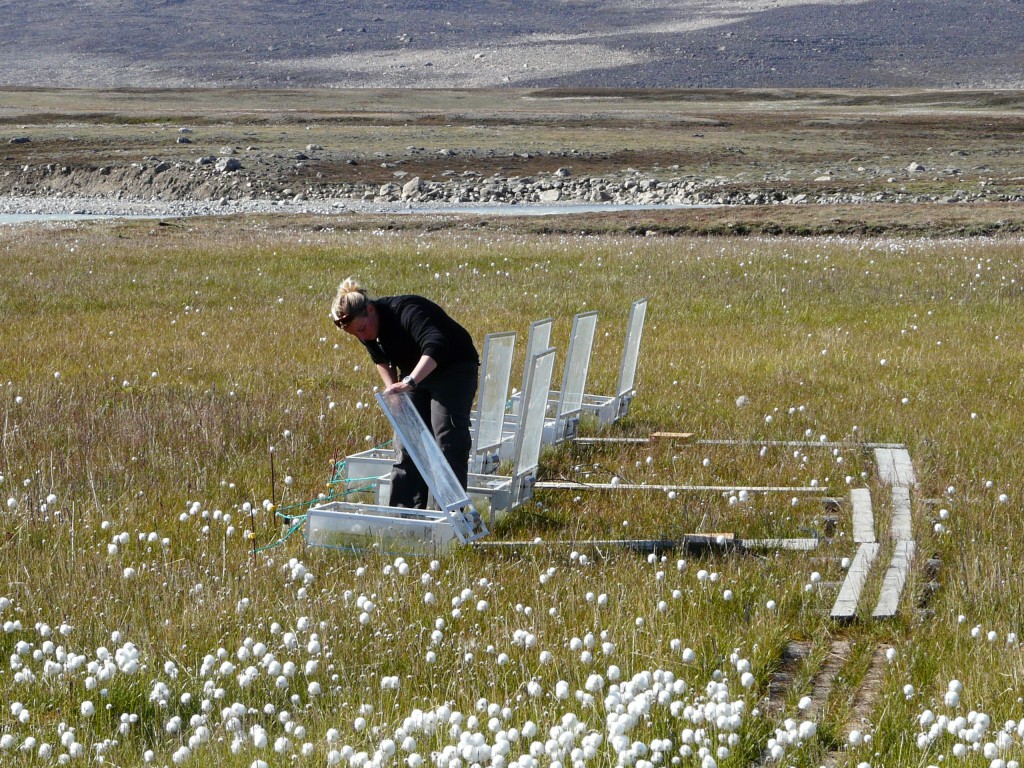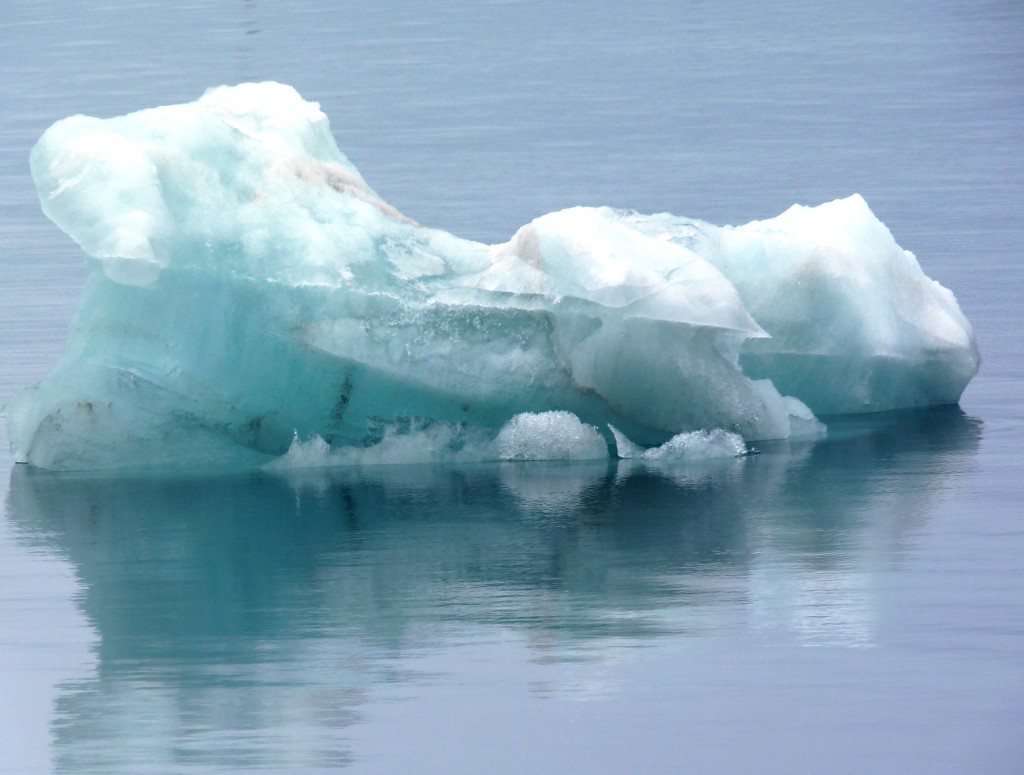Search Results for Tag: permafrost
UNEP concerned about Arctic melt
The UN Environment Programme (UNEP) has issued a warning that last year’s record shrinkage of the Arctic sea ice highlights the risks climate change brings for the planet. The annual review of the state of the world’s environment was presented in Nairobi this week during an ongoing high-level ministerial meeting.
UNEP said the summer sea ice in the Arctic had covered a record low area of 3.4 million square kilometers, 18 percent below the previous recorded minimum in 2007 and 50 percent below the average for the 19802 and 1990s. The report also mentions melting land ice in Greenland and melting permafrost in high latitudes. The figures are not new, but it is significant that UNEP should highlight the Arctic and the fact that no action is being taken in reaction to the evidence which clearly shows climate-change-induced melting.
“Changing environmental conditions in the Arctic, often considered a bellwether for global climate change, have been an issue of concern for some time, but as of yet this awareness has not translated into urgent action”, UNEP Executive Director Achim Steiner said presenting the report on Monday. He warned that the rush to extract oil and gas from the Arctic seabed as the ice retreats could lead to even higher emissions of greenhouse gases.
“What we are seeing is that the melting of ice is prompting a rush for exactly the fossil-fuel resources that fuelled the melt in the first place”, said Steiner.
Now this is a sentiment Greenpeace, WWF Arctic and other groups have been expressing for years. Here we have it from the world’s key environment watchdog.
“The rush to exploit these vast untapped reserves has consequences that must be carefully thought through by countries everywhere, given the global impacts and issues at stake”.
Meanwhile, this week, Russian President Vladimir Putin signed the country’s “strategic program on Arctic development up to 2020. Enough said?
For anyone who wants to catch up on the Arctic development story, here are a few links.
Polar ice sheets melting faster than ever
Business opportunities boom in the Arctic
Sea levels rising faster than expected
China’s Arctic ambitions spark concern
Energy giants cooperate for Arctic resources
Warming permafrost on the Doha agenda

Scientists at measuring stations like the one I visted at Zackenberg, Greenland, measure the amount of greenhouse gases emitted by melting permafrost.
I was glad to see UNEP making sure the melting permafrost issue gets some wider public attention by launching its first report on the status of the world’s permafrost regions in Doha while the international climate talks are in full swing. Climate change is having a major impact on the permanently frozen soil in the Arctic, Siberia and high mountain regions. In the UNEP study, an international team of experts explain what is happening and what potential risks this thaw has for countries with permafrost.
![]() read more
read more
Seeds in transit: from Australia to Svalbard

Ice blog followers may remember my account of a visit to the Svalbard seed vault, which preserves a wide variety of seeds safe under the permafrost of an Arctic mountain for posterity. The story is also online at DW’s environment website.

The idea is that saving a wide diversity of crop seeds could help humankind survive in the future in spite of any disasters occurring – or, for instance, to help agriculture cope with the challenges of a changing climate.
Well the vault has just celebrated its third birthday with a bumper delivery of seeds from different parts of the world. For the first time ever, seeds have been delivered from Australia, just about as far away as you can get from the Arctic. Australia is one of the areas of the world that are particularly vulerable to climate change. It has had to cope with an increasing number of extreme weather events, droughts and floods. The seeds brought to Svalbard were the furthest travelled of the more than 600,000 samples now stored at the vault.
Most of Australia’s food crops come from outside the country, and so are dependent on global crop diversity.
There’s more information on the website of the Global Crop Diversity Trust. See also “Wild Relatives can save our food supply” on why it’s important to preserve crop seeds for posterity.
Permafrost “tipping point” in less than 20 years?

I have been concerned about the effect of melting permafrost on the climate for quite some time, not least in the wake of encounters with scientists working in Greenland (this picture is Zackenberg, Greenland, 2009) and Alaska. Now research results published by the National Snow and Ice Data Centre (NSDIC) in Boulder, Colorado are indicating that there could be a “tipping point” or a “starting point”, as Professor Kevin Schaefer prefers to call it, in less than 20 years. That means a point when the vast areas of permafrost in Alaska, Canada, Siberia and parts of Europe go from being a “carbon sink” to a carbon source. The study indicates as much as two-thirds of the carbon frozen into the permafrost could be released.
There’s more info on the NSIDC website and on the ips news website, based on an interview with Prof. Schaefer. Not happy reading, but without big reductions in emissions, it will probably be impossible to prevent this. On top of that come the methane emissions, not included in the study. Methane is much more powerful than CO2 as a greenhouse gas.
Germs under the permafrost: too scary?

-Monitoring the permafrost and emissions from it at Zackenberg Station, Greenland, I took the photo in 2009-
„I hope I wasn’t too scary“, said Professor Andrej Grjbovski to me after our panel discussion in Bonn the other night. He works with the Norwegian School of Public Health in Oslo and the Northern State Medical University in his native Arkhangelsk in Russia.
Well I’m not for panic-mongering, but given some of the information our experts were coming out with, maybe you can’t be too scary.
Prof. G. was in Bonn both for the conference at the environment ministry and the public panel discussion. (See links on the Ice Blog 30.11.2010). Amongst other things, he’s involved in a WHO project to monitor the effects of climate change on health in a region of northern Russia.
He was referring in particular to the health dangers from melting permafrost. There are all sorts of dangerous things buried in the permafrost, which come to the surface as it melts. Not for nothing do some people refer to a “timebomb” in the Arctic. After outbreaks of diseases like anthrax, for instance, animals were buried in mass graves. The anthrax spores can survive in there and pose a new threat to health as they emerge again. Yes, Professor, that is definitely in the “scary” category.
But a changing climate poses all sorts of less “spectacular” but nonetheless crucial challenges to health care around the globe. The WHO says the 2003 heatwave killed 70,000 people in Europe. Heatstroke and heart attacks can be fatal to the particularly vulnerable, especially older people. Children and the homeless were also mentioned as amongst the vulnerable population groups.
Floods are another example. Apart from deaths from drowning, there’s the water pollution and fungus left over in the aftermath, which can result in the spread of infectious diseases, respiratory and digestive problems etc.
And of course species are moving to different areas – including, for instance, the mosquito types that are bringing illnesses like Dengue to Europe.
Needless to say – but I’m doing it anyway, sometimes we have to keep reminding ourselves of the obvious – it’s the people in poorer countries or areas who suffer most from the higher health risks through climate change. Germany has an adaptation strategy involving early warning systems for extreme weather events or the spread of infections and flood protection systems. The deputy director of the German meteorology office the DWD Paul Becker told me in an interview capacity building and passing on the necessary expertise to adapt to the health risks posed by a changing climate were the key issues in helping the developing world, whereby finding the necessary funding was probably the main challenge.
Incidentally, on the sidelines of the Cancun talks, Germanwatch published its latest Climate Risk Index. It says more than 650,000 people died in around 14,000 extreme weather events over the last two decades.





















Feedback